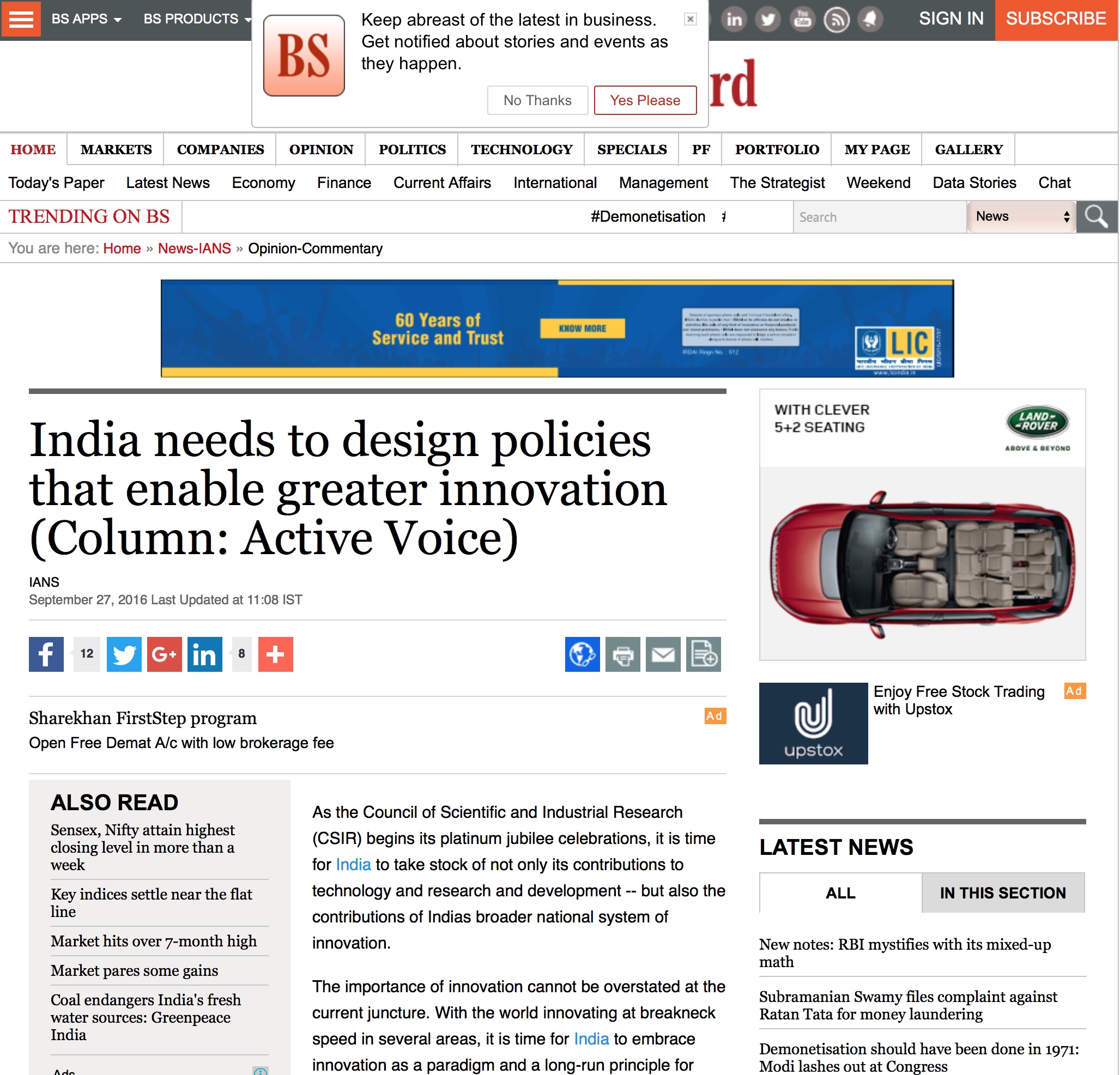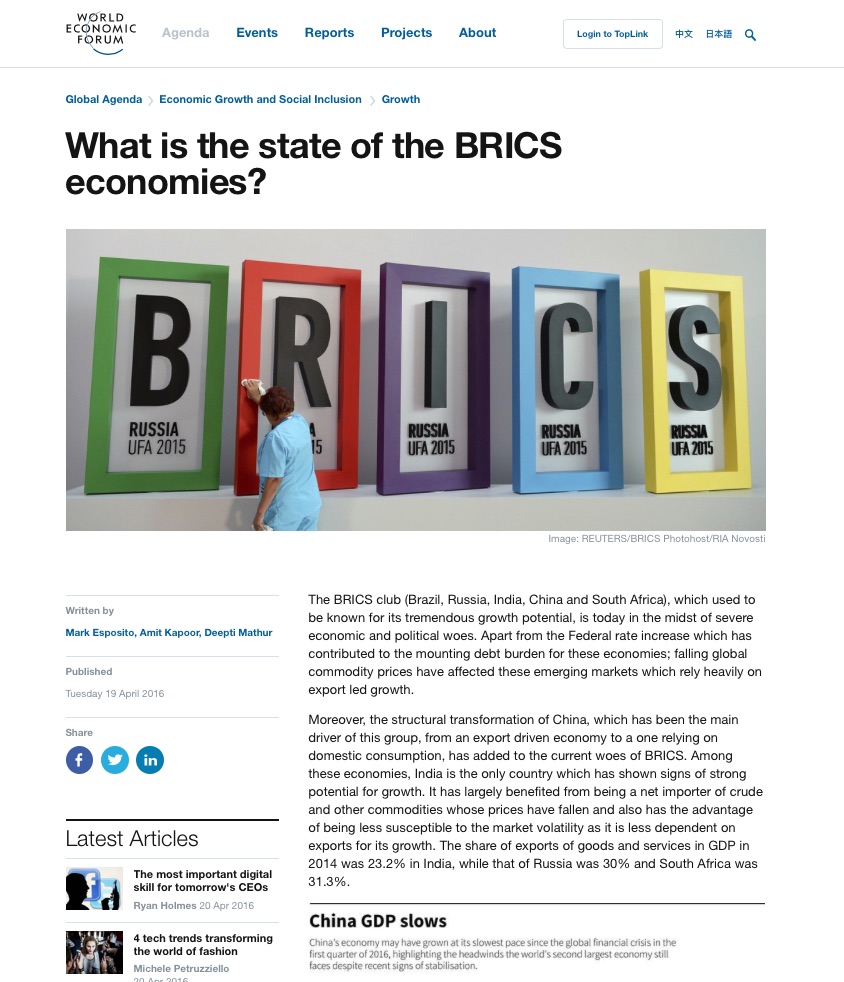By Amit Kapoor and Nabha Joshi
Artificial Intelligence (AI) has the potential to revolutionize efficiencies across healthcare, finance, transportation, and manufacturing sectors. Another domain, sustainability, has emerged as an urgent priority, tackling pressing concerns such as carbon emissions, environmental degradation, and climate change in general. Prima facie, these two domains may seem to be disparate realms. Yet, their intersection reveals a telling narrative that the energy-intensive nature of AI development necessitates embedding sustainability into its framework.
AI has become an integral part of technological and governance mechanisms. The edge AI has over other technologies lies in its ability to handle, process, train, and analyze data at a speed incomparable to any other prevailing technologies. Its interoperability and adaptability have made it an effective tool in delivering services in core sectors like healthcare, education, agriculture and governance. Data centers that provide uninterrupted high-density power are central to these high-performing AI technologies. This high demand for power makes AI an environmental challenge. The International Energy Agency (IEA) reports that these data centers account for 2.5-3.7% of global greenhouse emissions and account for 0.9-1.3% of global electricity demand. The Economic Survey 2023-24 states that the global power demand from data centers can surpass 1000 Terawatt hours (TWh) by 2026, twice France and Germany’s current net power demand, which stands at 500 TWh each. According to a study by Cornell University, training large language models, such as GPT-3, results in electricity consumption comparable to 500 metric tons of carbon dioxide, roughly translating to 1.1 million pounds. An estimate by the International Energy Agency posits that each query made through ChatGPT consumes ten times more energy than a similar search on Google. As the development of AI progresses, the demand for power will increase exponentially. For instance, GPT-2, launched in 2019, has 1.5 billion parameters (fundamental adjustable elements that define the behavior and complexity of an AI model), followed by GPT-3, which featured 175 billion parameters, which is more than 100 times the parameters employed in the initial model. Google’s PaLM model had 540 million parameters. Given the promise it holds for problem-solving, its rapidly improving computational performance, and advancements in developing sophisticated models, the demand for AI is expected to increase exponentially, followed by the intensive energy requirement for such exhaustive AI models. To mitigate the environmental impact of this growth, what should lie at the heart of AI infrastructure and data centers is the non-negotiable objective of sustainability.
A report by NASSCOM and BCG forecasts a surge in India’s AI market, which is on track to reach around $17 Billion by 2027, growing at a CAGR of 25-35%. This exponential growth is driven by the government’s efforts to improve internet accessibility and connectivity, establish Digital Public Infrastructure (DPI), and immense investment by private players in data analytics and startups. In 2024, a budget of Rs 10,300 crore has been passed in 2024 for the India AI Mission. This investment supports initiatives focusing on computational capacity, Innovation Centers, improving access to high-quality datasets, and strengthening cybersecurity. There is a dedicated emphasis on skill development, recognizing the potential of job creation by AI in the Indian Economy. Currently, India ranks as the 13th largest market for data centers globally, with an estimated value of $1.5 billion and a network of 138 centers. The data capacity of these centers has gone up from 540MW in 2019 to 800MW by 2022. By the end of 2025, India plans to add 45 new data centers totaling 13 million square feet and 1,015 megawatts of capacity to stimulate data localization efforts.
Along with this, Indian Public Cloud Services are expected to reach $13.5 billion by 2026. While these developments are necessary for India’s technological progress, they raise concerns about energy consumption and carbon emissions. These data centers are estimated to account for 2% of the nation’s total power consumption, mainly fueled by fossil fuels. This elicits concerns about the long-term sustainability of these advancements.
Various measures can be undertaken to reduce AI’s energy consumption and carbon footprint. One such measure is using specific function models that tend to have lesser energy requirements than models that perform multiple functions simultaneously. Other measures include using advanced and efficient hardware, such as chips explicitly designed for Large Language Models (LLM) that tend to be faster and more energy efficient, using specialized cooling agents rather than traditional cooling methods that have a higher energy requirement, and using renewable sources of energy to power the data centers are critical in reducing the overall lifecycle emissions. The emissions generated by data centers can be primarily attributed to the energy mix used to power the data centers. Countries like France, Germany, and the United Kingdom, which have attained an energy mix with a higher ratio of renewable energy in the energy mix, the environmental impact of data centers is considerably lower than in economies like India, where energy is predominantly (56.8%) derived from fossil fuels. Major industry players, like Microsoft and Google, are aiming to operationalize their cloud data centers entirely on renewable energy and achieve carbon neutrality by 2030. India could follow suit by ensuring that the 45 new data centers currently planned are carbon neutral. As traditional energy sources become increasingly costly and environmentally harmful, renewable energy emerges as a viable alternative for powering digital and AI advancements. The advantage of a cleaner energy mix is that it will also immensely impact sectors dependent on power as their primary resource. It will positively impact the electric mobility goals in India by causing a dramatic reduction in lifecycle emissions of Electric Vehicles (EVs). A better energy mix will reduce import dependency and propel India to achieve its carbon neutrality goals.
With its data-rich population, India has the potential to leverage AI and digitalization for service provision and delivery and to fuel cutting-edge technological innovation. However, as the country advances towards a more digitalized and AI-driven future, it is crucial to be conscientious of its energy sources and the potential effects on the climate. India must integrate sustainable practices within its data center infrastructure. Though the government encourages the use of solar and renewable energy through the Data Centre Policy 2022, there are no clear guidelines. Regulations that deter stakeholders from using non-renewable energy sources and setting a defined energy mix requirement with a rewards system can incentivize more energy-efficient AI infrastructure. It is incumbent upon India to adopt greener technologies and practices to ensure that digital transformation and AI present themselves as allies of sustainability. Striving towards an energy mix with a predominance of renewable energy sources will help India secure itself from data vulnerabilities and energy security issues and ensure a smooth transition towards a cleaner, carbon-neutral economy.
The article was published with Business World.
























